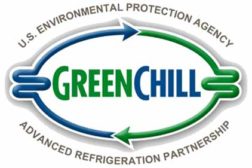Home » HFO refrigerant
Articles Tagged with ''HFO refrigerant''
Want A Quiet Life After R-22? Think Again – It’s Time to Embrace a New Way of Working
Read More
Airedale Chiller with Low-GWP HFO Refrigerant to Cool New John Lewis Store
R-1234ze Has a Global Warming Potential Lower Than One, Better Than CO2
June 9, 2014
The Business of Refrigeration Is Global in Nature
Refrigerants, Carbon Credits, GreenChill Draw Interest
Read More
April 1, 2014: Asahi Develops New Low-GWP Refrigerant to Replace HFC-410A
Company Aims to Launch Commercial Production in 2016
April 1, 2014
Dec. 23, 2013: Star Refrigeration Launches Energy Efficient HFO Chiller
Star Teamed with Danfoss Turbocor and Honeywell in Developing the New Chiller
December 23, 2013
Honeywell Gains Nod from EPA for HFO
Refrigerant Aims for Centrifugal Chiller Market
December 9, 2013
Oct. 10, 2013: Danfoss Turbocor Introduces New HFO Compressor
TG310 Compressor Is Available for Air-Cooled, Outdoor-Mounted Chiller Applications
October 10, 2013
Copyright ©2024. All Rights Reserved BNP Media.
Design, CMS, Hosting & Web Development :: ePublishing







